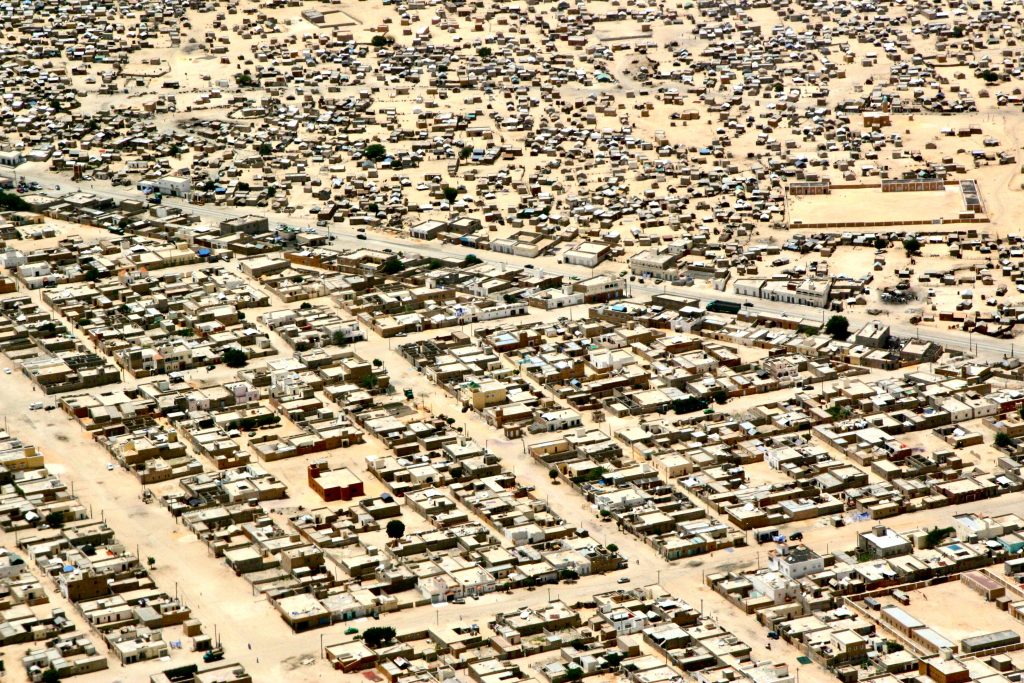
MAURITANIA
The Sahara is big, roughly as big as the United States. 90% of Mauritania are covered by it, being itself as big as Spain and France put together. Sandwiched between the salt of the wild Atlantic on one side and the constant threat of being taking over by the desert on the other side, its capital Nouakchott has long been the holy grail of obscurity and for most of the time a modest coastal village. The great oasis town of Chinguetti, however, 1200 kilometers further inland, had once been one of the centers of the civilised world and of Islamic scholarship, thanks to dozens of libraries. Ibn Battuta, one of the greatest explorers ever, reaching as far as Asia and recording his journeys in “A Gift to Those Who Contemplate the Wonders of Cities and the Marvels of Travelling“, came down from Tangiers. In those days of the 14th century, caravans of camel were coming and going between Morocco and the fabulous kingdom of Mali.
On my visit in 2006, Mauritania was still a place of transit. The caravans were gone, but Nouakchott was full of hope, full of people in transit hoping to somehow catch a fishing boat to to the nearby Canary Islands, i.e. to Europe. Restaurants were scare, but as all over West Africa, it was the baguette which was surviving from French colonial times. I rather ate delicious Thieboudiene, a traditional fish-and-rice dish in tomato sauce. In the afternoon, as the big heat was off, I went to the Plage de pecheurs. The fish market was a hub of activity, as fishermen were bringing in their catches and bargaining with the vendors. Most vendors seemed to be black Africans, as Arabs were obviously not great fans of fish, but preferred camel, mutton and goat. I asked one fisherman who had just arrived from a daylong trip to the sea, about his meagre catch collected in his long low boat. I loved his gentle reply; „Whatever God gives us makes us happy.”
